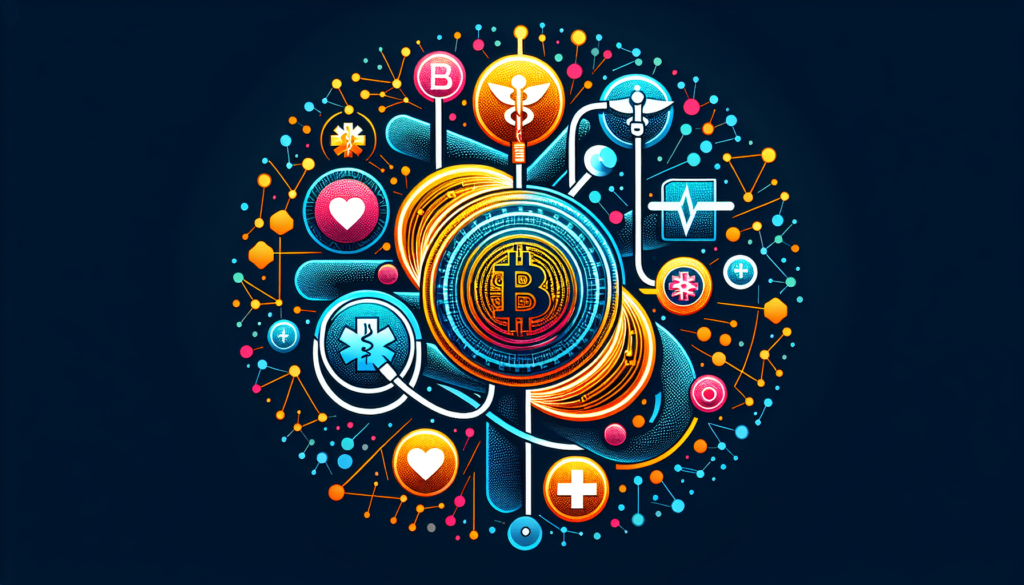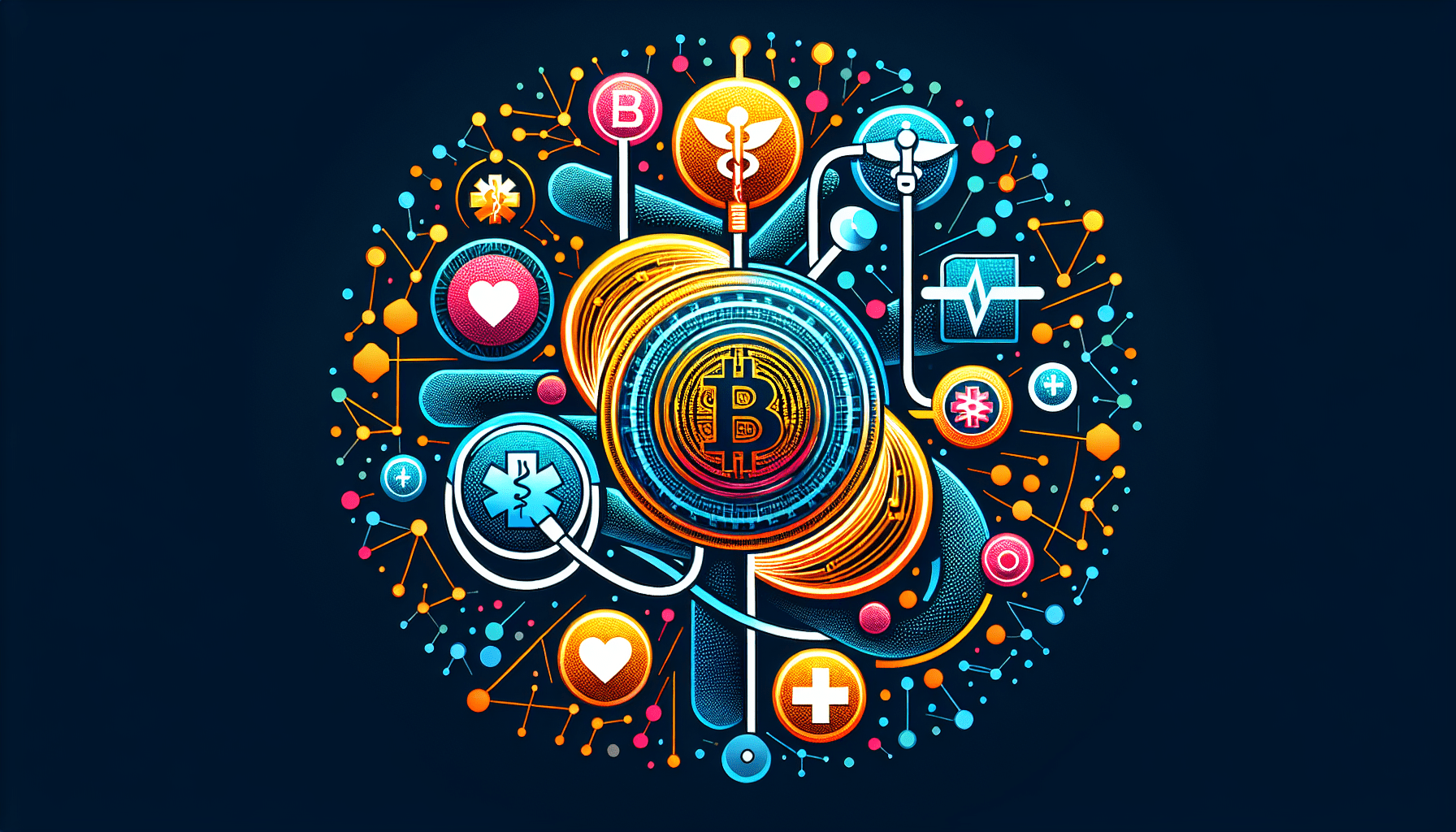Have you ever wondered how crypto can revolutionize the way health information systems function? You might be curious about the potential implications that blockchain technology holds for the healthcare sector. This is a fascinating intersection of technology and health, where traditional methods stand on the brink of transformation.
In this friendly guide, you’ll explore how the use of cryptocurrencies and blockchain can enhance the reliability, security, and efficiency of health information systems. As the healthcare industry continues to evolve, using advanced technologies such as crypto provides compelling opportunities for improving patient care and data management.

Understanding Crypto and Blockchain
What is Cryptocurrency?
Cryptocurrency is a digital or virtual form of currency that uses cryptography for security. This makes it difficult to counterfeit. Most cryptocurrencies operate on decentralized networks based on blockchain technology. Unlike traditional currencies issued by central banks, cryptocurrencies are generally decentralized, meaning they are not controlled by any central authority.
What is Blockchain?
At the heart of cryptocurrency is blockchain technology. Think of blockchain as a digital ledger, rooting for transactions that are duplicated and distributed across an entire network. Each block of information within the chain contains a list of transactions, and new ones are continually being submitted. This ensures that the record is accessible to all participants, enhancing transparency and security.
Why Blockchain for Health Information Systems?
Security and Privacy
When handling sensitive health data, the need for secure and private systems is paramount. Blockchain technology offers an immutable ledger, where each piece of data recorded can’t be altered or deleted without the consensus of the network. This makes data breaches and unauthorized access considerably less probable, a crucial advantage in protecting patients’ sensitive information.
Interoperability
Health information is often stored across multiple platforms and systems, which can lead to fragmentation. Blockchain holds the potential for seamless interoperability. It allows different healthcare systems to communicate effectively, enabling a smoother exchange of information and consistency across platforms.
Benefits of Using Crypto in Health Information Systems
Enhanced Data Security
With the secure design of blockchain, institutions can protect against data breaches more effectively. Each transaction is encrypted and linked to the previous one, ensuring no data can be altered without the network’s approval. This feature greatly enhances the security measures associated with storing patient records and other sensitive data.
Improved Data Sharing
Effective health care requires that various healthcare providers are able to access and share patient information swiftly and precisely. Blockchain technology enables this by offering real-time access to these records, ensuring that all linked participants can see the latest information.
| Benefit | Description |
|---|---|
| Enhanced Security | Encrypted and immutable records prevent unauthorized data alterations. |
| Improved Data Sharing | Facilitates real-time, accurate access to patient information by healthcare providers. |
| Robust Privacy | Patients have more control over who can access their data, with explicit consent before sharing. |
| Cost-Effective | Reduces administrative costs by streamlining processes and eliminating the need for multiple intermediaries. |
| Interoperability | Different healthcare systems can easily share and sync information, reducing data fragmentation. |
Challenges in Implementing Crypto in Healthcare
Regulatory Compliance
Navigating through various regulatory hurdles can be challenging when introducing blockchain in healthcare. Compliance with privacy standards like HIPAA (Health Insurance Portability and Accountability Act) is critical. Institutions must ensure the technology’s deployment aligns with local regulations governing data protection.
Technical Complexity
Implementing blockchain-based solutions can be technically demanding. It requires an understanding of both healthcare operations and blockchain technology, which demands expert personnel and significant resources.
Adoption Resistance
Change is often met with resistance, and the same applies to integrating new technologies. Healthcare providers may be hesitant to transition from conventional systems to blockchain solutions due to perceived risks or lack of understanding.

Overcoming Challenges
Building Awareness
Education and awareness are vital to ease transitions. By helping stakeholders understand the benefits and functionalities of blockchain, you can mitigate much of the resistance that comes from fear of the unknown.
Collaborative Approaches
Collaboration between tech experts and healthcare professionals is essential. By working together, these groups can create solutions that are both technically robust and aligned with the operational realities of healthcare.
Real-World Applications of Blockchain in Healthcare
Electronic Health Records (EHRs)
The inefficiencies and vulnerabilities of current electronic health record systems can be addressed through blockchain. By decentralizing EHRs, patient data can become both more secure and accessible.
Supply Chain Management
Blockchain can also be applied to supply chain management in health care, ensuring the authenticity and integrity of pharmaceutical products. A transparent supply chain can help reduce the risk of fraud and ineffective medication.
Clinical Trials
The integrity of clinical trial data can be reinforced through blockchain. This technology ensures that data is tamper-proof, thereby maintaining trust in the results produced by these trials.
Steps to Implement Crypto in Health Information Systems
Evaluate the Current System
Begin by assessing the current health information system to identify limitations and opportunities for blockchain integration. Understand where the addition of blockchain could provide the most value.
Set Clear Objectives
Define what you wish to achieve by implementing blockchain technology, whether it’s increased security, better data sharing, or improved patient engagement.
Develop a Strategy
Create a comprehensive strategy that outlines how to incorporate blockchain into existing systems. Consider aspects such as integration, scalability, and sustainability while formulating this plan.
Get Stakeholder Buy-In
Engage stakeholders early to gain their support. Highlight the benefits and address concerns to synchronize everyone’s efforts towards a common vision.
Pilot and Evaluate
Conduct a pilot implementation to identify potential issues while evaluating the blockchain system’s performance and outcomes. Use these learnings to refine the solution before full-scale deployment.
Future of Crypto in Health Information Systems
Advancements in AI and IoT
The integration of Artificial Intelligence (AI) and Internet of Things (IoT) with blockchain presents exciting opportunities for healthcare. These advances can further enhance data analysis and operational efficiency, offering deeper insights for better decision-making.
Personalized Healthcare
Blockchain could also facilitate more personalized healthcare by providing patients control over their health data, allowing them to share it with multiple providers as they choose.
Expanding Global Reach
As blockchain technology becomes more accessible, there is the potential for it to enable improved healthcare systems worldwide, especially in areas where reliable healthcare infrastructure is lacking.
Conclusion
Cryptocurrencies and blockchain technology hold significant promise for revolutionizing health information systems. By improving security, enhancing interoperability, and making data management more efficient, crypto can fundamentally change how healthcare providers access and interact with patient data. Despite the challenges, the opportunity for better patient outcomes and streamlined operations drive healthcare facilities to explore these innovative solutions. Unlocking these advancements can empower you and the healthcare ecosystem, catalyzing a future where high-quality healthcare is universally accessible and securely managed.

